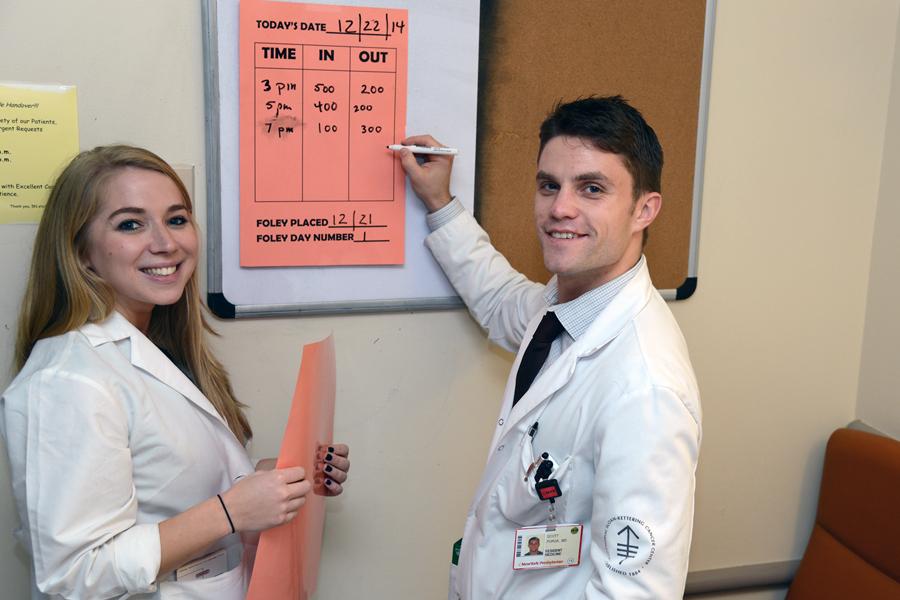The Society of General Internal Medicine (SGIM) has accepted the abstract of two residents-in-training, Scott Purga and Caroline Andrew. Their study has shown that a simple visual aid tool is cost-effective and improves compliance with intake and output (Is and Os) documentation for inpatients who have "volume-critical" diagnoses.
Volume-critical diagnoses include congestive heart failure, chronic or end-stage renal disease, cirrhosis, sepsis, and pancreatitis. These types of conditions and diseases require the close monitoring of fluid intake and output information, including IV fluids, oral intake and urine output. Dr. Purga and Dr. Andrew carried out a study on a general medicine inpatient unit at NewYork-Presbyterian/Weill Cornell where they implemented a simple tool – a bright laminated board as a visual aid. The responsible nurses and support staff utilized the board to record all intake and output for their patients; data taken from 24 shifts were examined to determine how well the Is and Os were documented.
Using a Pearson Chi-Squared analysis, the study compared the pre-intervention scenario (before the use of a visual aid) and the post-intervention scenario (the period of time when the visual aid was in place). Findings revealed that compliance of intake and output recording when the visual aid was used increased substantially from 21.5% to 57.5%. Additionally, residents-in-training on the floor were surveyed regarding their perception of intake and output recording accuracy when the visual aid was in use. Their conclusion: the visual aid tool significantly increased accuracy.
"In terms of quality improvement efforts, this study has proven that a simple cost-effective tool can advance quality in patient care significantly. This study can serve as a model for other ideas for advancing patient care in the hospital setting. We congratulate Drs. Andrew and Purga on their abstract and look forward to watching next steps in their project," said Dr. Lia Logio, Vice Chair of Education and Director of the Internal Medicine Residency Program.

Drs. Caroline Andrew and Scott Purga

